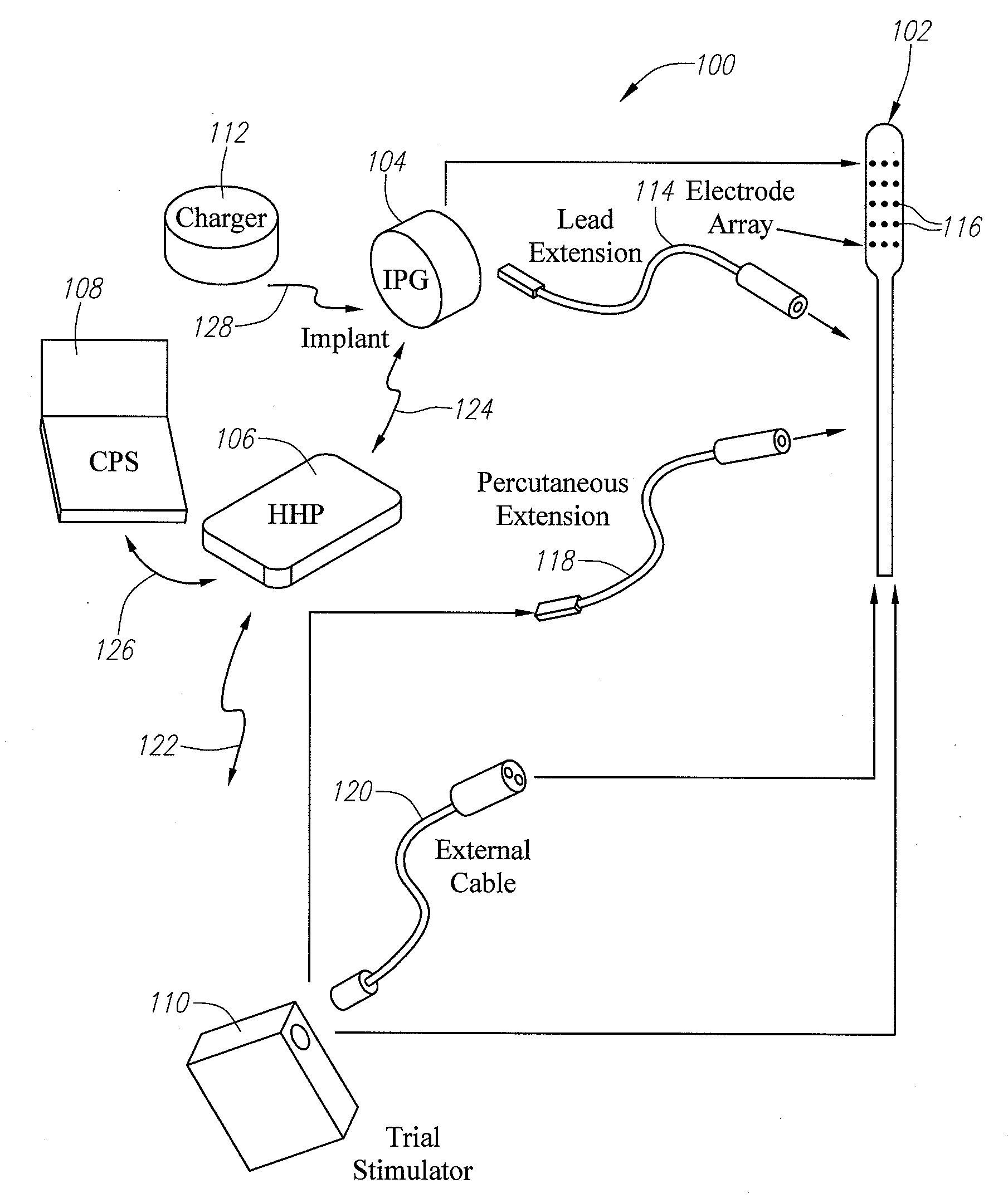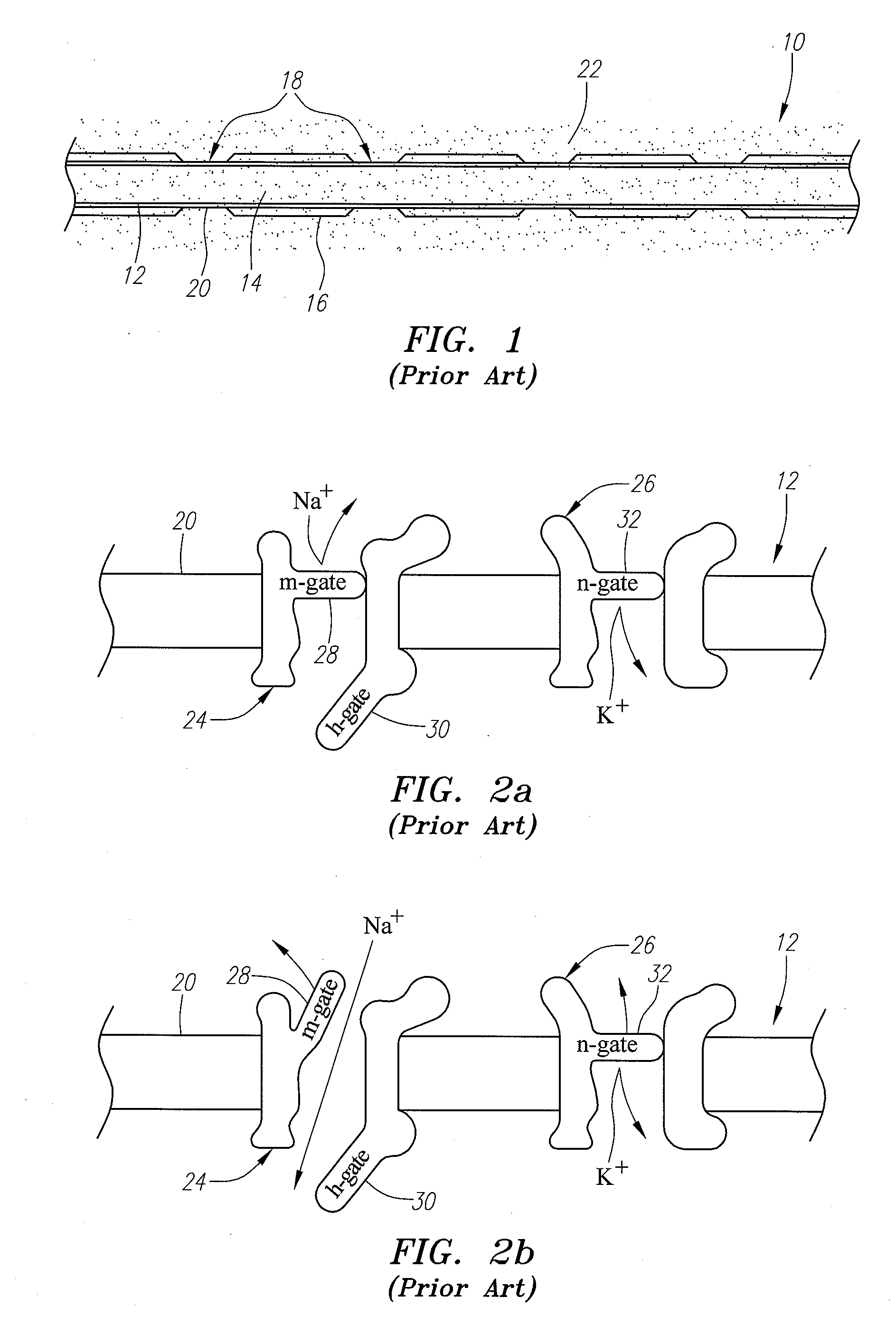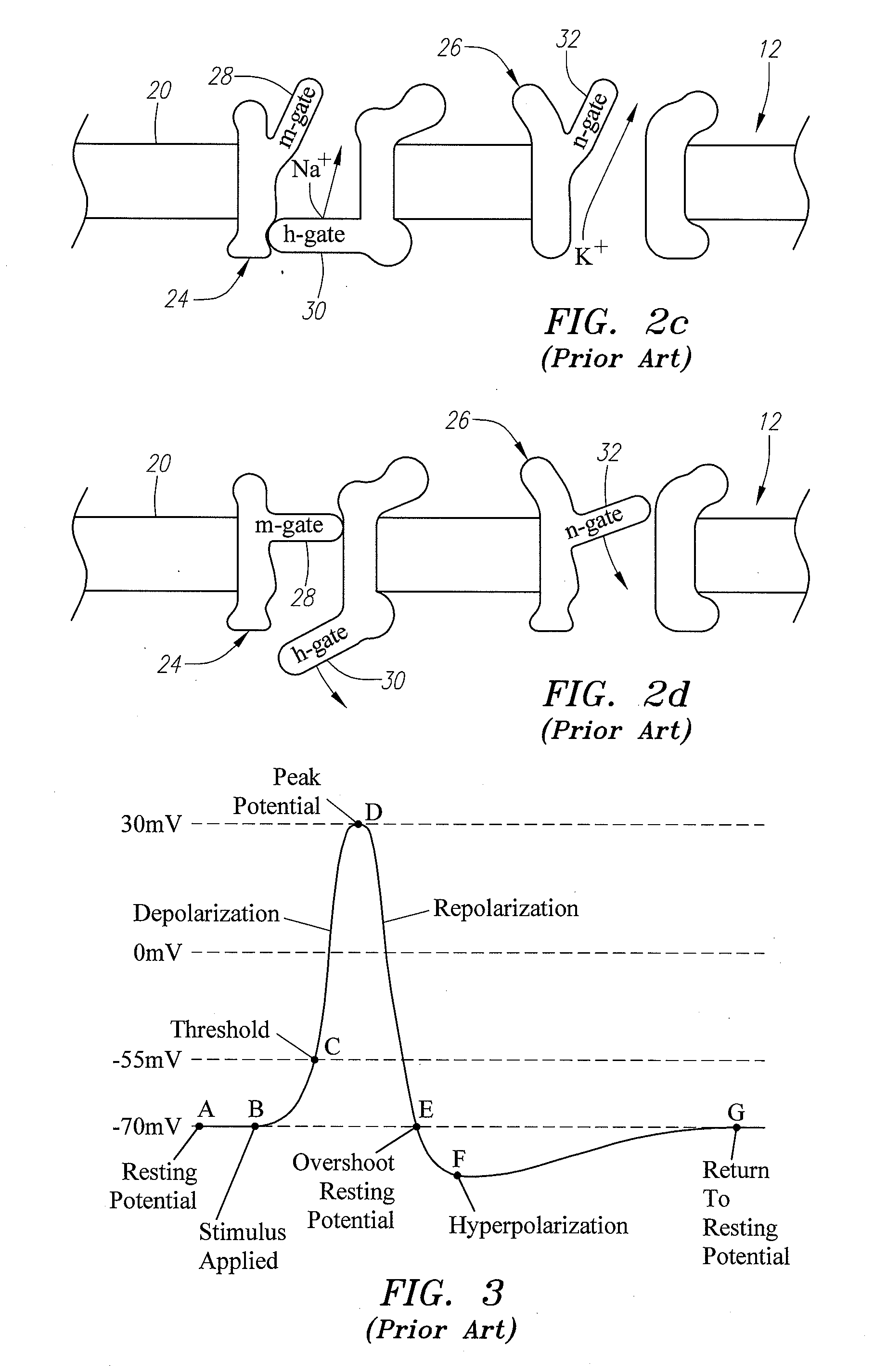Short duration pre-pulsing to reduce stimulation-evoked side-effects
a short-duration, stimulation-evoked technology, applied in the field of tissue stimulation systems, can solve the problems of increasing the “stimulation” period, difficult to achieve, and difficulty in achieving long-duration conditioning pulses, and achieve the effect of increasing the stimulation threshold of the first tissue region
- Summary
- Abstract
- Description
- Claims
- Application Information
AI Technical Summary
Benefits of technology
Problems solved by technology
Method used
Image
Examples
Embodiment Construction
[0043]At the outset, it is noted that the present invention may be used with an implantable pulse generator (IPG), radio rate (RF) transmitter, or similar electrical stimulator, that may be used as a component of numerous different types of stimulation systems. The description that follows relates to a spinal cord stimulation (SCS) system. However, it is to be understood that the while the invention lends itself well to applications in SCS, the invention, in its broadest aspects, may not be so limited. Rather, the invention may be used with any type of implantable electrical circuitry used to stimulate tissue. For example, the present invention may be used as part of a pacemaker, a defibrillator, a cochlear stimulator, a retinal stimulator, a stimulator configured to produce coordinated limb movement, a cortical stimulator, a deep brain stimulator, a peripheral nerve stimulator, or in any other neural stimulator configured to treat urinary incontinence, sleep apnea, shoulder sublaxa...
PUM
 Login to View More
Login to View More Abstract
Description
Claims
Application Information
 Login to View More
Login to View More - R&D
- Intellectual Property
- Life Sciences
- Materials
- Tech Scout
- Unparalleled Data Quality
- Higher Quality Content
- 60% Fewer Hallucinations
Browse by: Latest US Patents, China's latest patents, Technical Efficacy Thesaurus, Application Domain, Technology Topic, Popular Technical Reports.
© 2025 PatSnap. All rights reserved.Legal|Privacy policy|Modern Slavery Act Transparency Statement|Sitemap|About US| Contact US: help@patsnap.com



